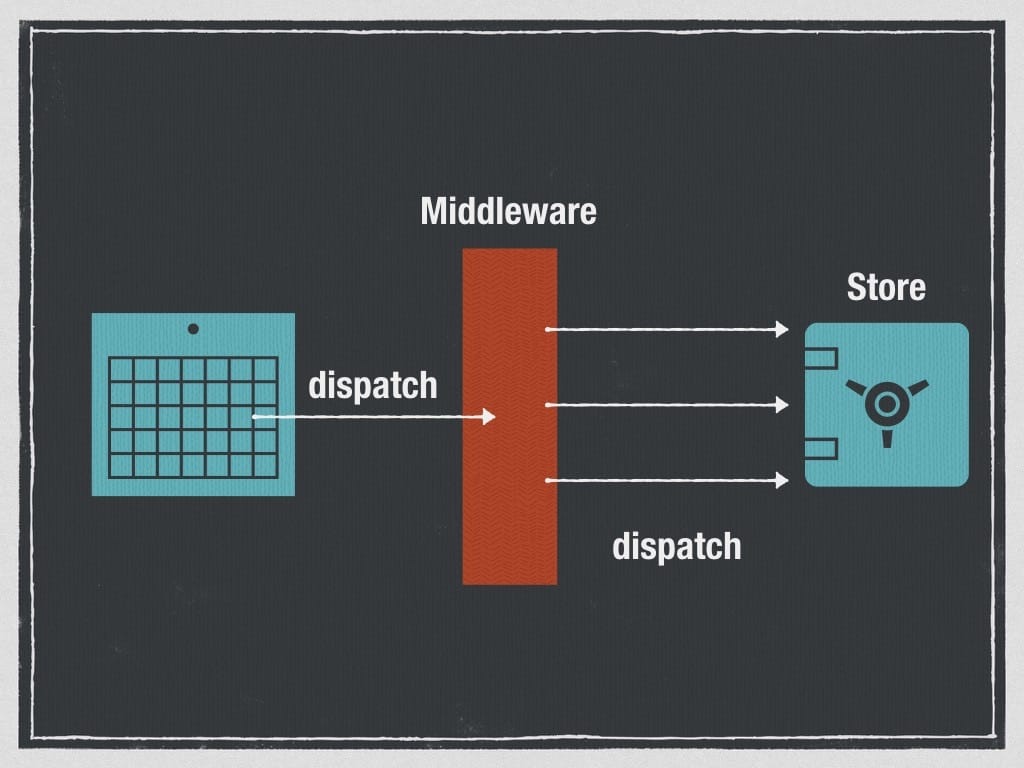Redux-Thunk源码阅读
redux-thunk是redux解决异步的中间件。
举个例子,我们需要fetchUser拿到用户信息,然后存到redux中。如果没有thunk,我们需要在组件中fetchUser.then,然后dispatch一个action存到redux中,假如这个操作有多处需要,那么fetchUser.then这个就需要重复,存在一定的代码重复。thunk加入的话,我们可以把fetchUser.then(dispatch action)整体作为一个action进行复用。因为thunk改写了dispatchAPI,我们还是dispatch去用而已,但是已经不是个pure action了。

thunk引入
先看下项目中如何配置thunk。
const middleWares = [sagaMiddleware, thunk, routerMiddleware(history)];
const store = createStore(rootReducer(history), compose(applyMiddleware(...middleWares), reduxDevtools));
项目结构
知道了thunk的作用及使用方法,可以开始看thunk源码了。
仓库地址:戳这里
可以看出,thunk项目非常小,主程序文件只有一个src/index.js
├── .babelrc
├── .editorconfig
├── .eslintrc
├── .gitignore
├── .travis.yml
├── CONTRIBUTING.md
├── LICENSE.md
├── README.md
├── package-lock.json
├── package.json
├── src
│ ├── index.d.ts
│ └── index.js
├── test
│ ├── .eslintrc
│ ├── index.js
│ ├── tsconfig.json
│ └── typescript.ts
└── webpack.config.babel.js
通过目录树,可以Get到以下信息
- babel作为项目编译器
- editorConfig控制编辑器风格
- eslint控制代码风格
- git作为版本管理
- travis作为CI构建工具
- 使用npm,而非yarn作为包管理器
- 源码仍然使用JS来写,增加了TS定义文件,来确保TS项目下的类型安全
- thunk打包支持commonJS,ES,UMD
- thunk虽然代码不多,但也有UT,使用的chai
上述基础信息若有不足,实属吃惊,自行谷歌。
thunk是补充和拓展了redux的一些功能。要理解thunk的源码,需要看下redux的部分源码,这样可以理解两者是如何衔接的。
Redux源码
redux源码已采用TS进行编写
这里贴出部分相关Code
export default function applyMiddleware(
...middlewares: Middleware[]
): StoreEnhancer<any> {
return (createStore: StoreCreator) => <S, A extends AnyAction>(
reducer: Reducer<S, A>,
...args: any[]
) => {
const store = createStore(reducer, ...args)
let dispatch: Dispatch = () => {
throw new Error(
'Dispatching while constructing your middleware is not allowed. ' +
'Other middleware would not be applied to this dispatch.'
)
}
const middlewareAPI: MiddlewareAPI = {
getState: store.getState,
dispatch: (action, ...args) => dispatch(action, ...args)
}
const chain = middlewares.map(middleware => middleware(middlewareAPI))
dispatch = compose<typeof dispatch>(...chain)(store.dispatch)
return {
...store,
dispatch
}
}
}
compose操作是什么?看下对应的实现,注意注释,这是一个组合函数,从右向左依次执行。
compose属于JS函数式编程范畴,有疑问,可以戳这里
/**
* Composes single-argument functions from right to left. The rightmost
* function can take multiple arguments as it provides the signature for the
* resulting composite function.
*
* @param funcs The functions to compose.
* @returns A function obtained by composing the argument functions from right
* to left. For example, `compose(f, g, h)` is identical to doing
* `(...args) => f(g(h(...args)))`.
*/
export default function compose(...funcs: Function[]) {
if (funcs.length === 0) {
// infer the argument type so it is usable in inference down the line
return <T>(arg: T) => arg
}
if (funcs.length === 1) {
return funcs[0]
}
return funcs.reduce((a, b) => (...args: any) => a(b(...args)))
}
注意到上面的middlewares=>chain=> dispatch=>return,thunk作为中间件最终返回作为enhancer,传入createStore函数
export default function createStore<
S,
A extends Action,
Ext = {},
StateExt = never
>(
reducer: Reducer<S, A>,
preloadedState?: PreloadedState<S> | StoreEnhancer<Ext, StateExt>,
enhancer?: StoreEnhancer<Ext, StateExt>
): Store<ExtendState<S, StateExt>, A, StateExt, Ext> & Ext {
...
if (typeof enhancer !== 'undefined') {
if (typeof enhancer !== 'function') {
throw new Error('Expected the enhancer to be a function.')
}
return enhancer(createStore)(reducer, preloadedState as PreloadedState<
S
>) as Store<ExtendState<S, StateExt>, A, StateExt, Ext> & Ext
}
...
}
enhancer会执行,接下来执行返回的函数。当配置了thunk作为中间件时,thunk就是这里面的chain。接下来看下thunk
thunk源码
只有短短12行
redux-thunk
function createThunkMiddleware(extraArgument) {
return ({ dispatch, getState }) => (next) => (action) => {
if (typeof action === 'function') {
return action(dispatch, getState, extraArgument);
}
return next(action);
};
}
const thunk = createThunkMiddleware();
thunk.withExtraArgument = createThunkMiddleware;
export default thunk;
返回的是个柯里化函数,可以看出,如果传入的参数是函数,就执行函数,否则就跟以前一样dispatch(plainObject)
redux-saga与redux-thunk的不同
这里聊到了redux-thunk,就也提一下另一个中间件方案 redux-saga.
redux-saga也是redux中间件,一开始举例子fetchUser然后存储到redux,如果用saga也可以实现。so对于单个项目,这两者是可以彼此替代的。但两者还是有不同。
thunk是将action改造成了函数,我们还是正常的dispatch来触发整个操作,而saga并不改变action,而是监听action,发起指定的action,就按顺序执行一系列操作。所以两者还是有根本性不同。
目前我参与的项目,已经弃用了thunk,而使用redux-saga
写在最后
- 单站在使用角度,saga更为灵活,开发及测试的维护性都会更高些。但并不是说thunk就不好。假如项目足够的简单,数据流转逻辑简单清晰,thunk足够。但假如,存储到redux的数据依赖多个请求,并且逻辑复杂,如果使用thunk,不免会陷入回调地狱,这时saga就可以让代码变得清晰可维护。
- thunk源码足够简单轻巧,一句话来说就是改写redux的dispatch API,使得可以变成函数,从而我们可以dispatch一个异步方法。
- 看看源码,确实有助于提升自己的基础,另外也知道了与这些作者的差距,so,继续加油。

